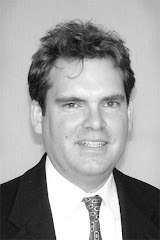s.jpg)
Former Lt. Gov Art Neu understands the rural-urban interplay as well as anyone in Iowa.
And it is this insight that it is behind the thoughtful idea Neu is promoting for K-12 schools: creating countywide districts that maintain high schools and distinct sports teams in rural locations where possible but share more high-level classes.
The plan could thwart draconian consolidation measures being advanced by Des Moines-centrics like State Sen. Matt McCoy, a Democrat from that city who wants state bureaucrats to sweep in and create large districts.
Neu, the Carroll Community School District attorney and former member of the State Board of Regents, wants to preserve what's best in our small district while correcting deficiencies.
"The small schools will have a longer life under this than they will independently," Neu said in an interview Monday night.
Neu is promoting a framework as he wisely reasons that educators themselves and local school boards should fill in the details.
Here's an outline of how the Neu plan would work.
"In Carroll County, we have four districts primarily in the county," Neu said in a letter published Sunday in The Des Moines Register. "Merge them into one district with a central administration and a district-wide school board. Each of the four existing districts could keep their high school with core curriculum and extracurricular activities, but for upper-level science and math classes as well as foreign-language classes, students would be bused to a central location."
What's more, school districts should have the authority to pay the teachers of advanced science classes, for example, premium salaries.
"It wouldn't reduce anybody else's salary," Neu said.
Additionally, instead of having to choose just one foreign language, Neu's sharing system would allow smaller school students a chance to choose (or take both) Spanish and German.
Neu notes that there is an optimum size of school district for ACT test scores. Composite test scores are best in districts 2,500 to 7,499 students. Districts above 1,000 have better ACT scores in math and science, though scores drop in districts over 7,500.
For his part, McCoy clearly is the wrong messenger on this one as he comes across as decidedly anti-rural. McCoy claims he doesn't want to punish the rural schools but one gets the distinct sense he's not all that worried about us in western Iowa, that he sees Des Moines as being inherently superior to the land outside its city limits in Iowa.
"I think that's a virus that an awful lot of people in Des Moines have," Neu said.
Having spent a great deal of time in small schools in Carroll and Story counties, there is an intangible value associated with these environments, the seamless connections they provide between classroom and home and town.
Many of the successful Iowa natives I've profiled over the last decade graduated from small schools.
Take for instance, Ron Olson, 67, born in Carroll and raised in Manilla, a son of an insurance salesman-broker. He is a primary lawyer at Munger, Tolles & Olson, the Los Angeles firm that American Lawyer magazine just named No. 1 in the nation.
Olson graduated from Manilla High School in 1959.
"I did all the things you do in small-town schools - played all the sports, band, chorus, and even an opera, " Olson said. "It was a great opportunity. It was like having the whole town rooting for you. Ever since I've had the same feeling - a feeling that the whole town has continued to root for me."
Critics will say that was a half century ago when far different demographics prevailed. But what Olson told me in an interview last fall holds true today. Our national character demands that we send some people into the general population - to fight our wars and serve in Congress - who hail from small schools.
This column first appeared in The Carroll Daily Times Herald.





No comments:
Post a Comment